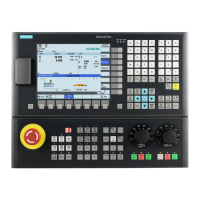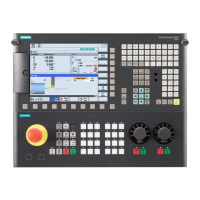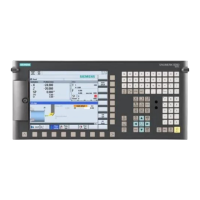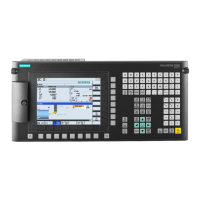Tool management
6.7 Start-up of code carrier
HMI Advanced (IM4)
268 Commissioning Manual, 03/2009, 6FC5397-0DP10-3BA0
index = index within tool/cutting edges dialog data
- = no assignment to a dialog variable
<dvar1>&<dvar2>=<uv> : Conversion rule applies to <dvar1> and <dvar2>
uv := <arithm. Op1> [ <arithm. Op2> ] .. [ <arithm. OpN> ]
arithm. Op := +<const> | -<const> | *<const> | /<const>
Example:
T2=(*10), T3=(/100 + 10)
or
uv := <replacement1> [<replacement2>] .. [<replacementN>]
replacement := <const1> [, <const2>] ..
[, <constN>] ^ <constM>
or
<const1..const2> ^ <const3>
const1 = lower limit value,
const2 = upper limit value
Note
When converting the dialog variable to the code carrier variable on writing, if there are
several operands, the right operand is converted to the first left operand.
Example:
T2=(20..29 ^ 120 40,50 ^ 130)
The code carrier variable with the value 25 is converted to dialog variable T2 with the value
120 (read). Dialog variable T2 with value 120 is converted to code carrier variable with the
value 20 (write).
or
uv := <Tetn>
Tetn := nth tetrad in byte sequence
Byte1, = Tet1 and Tet2
Byte2, = Tet3 and Tet4
Allocation of the tetrads of code carrier variables (in BCD format) to dialog variables.
Example:
T5=(Tet1), T6=(Tet2), T7=(Tet3), T8=(Tet4)
If the code carrier variable has the value 0x1234 for example, dialog variable T5 is assigned
the value 1, dialog variable T8 the value 4.
or
uv := <compare>
compare := < <const> [INVSIGN] | <= <const> | = <const> | >
<const> >= <const>

